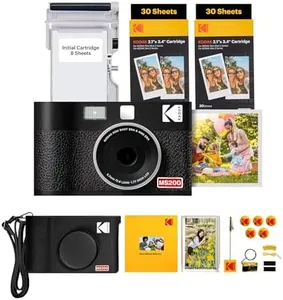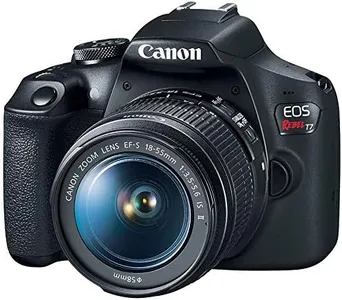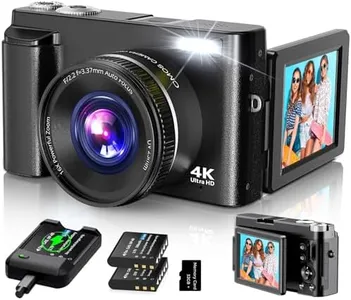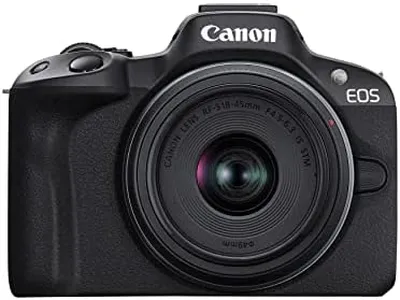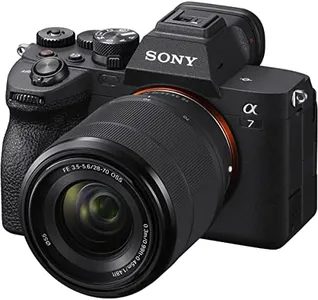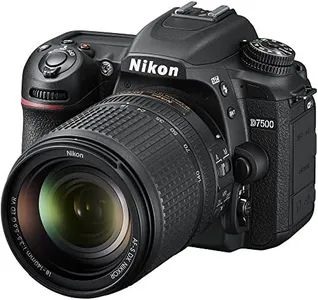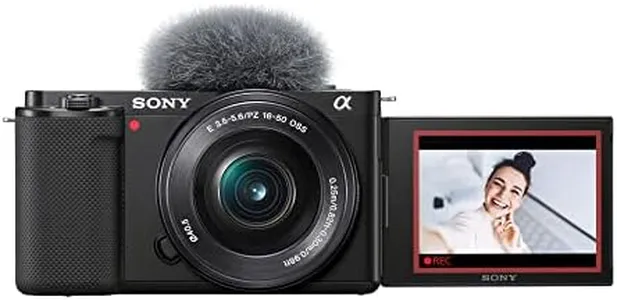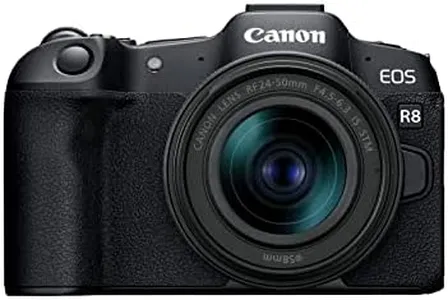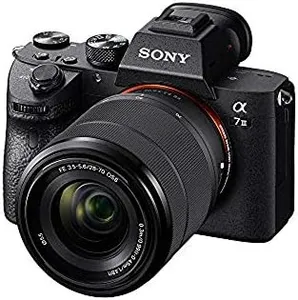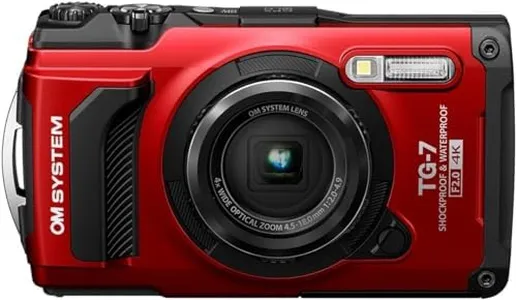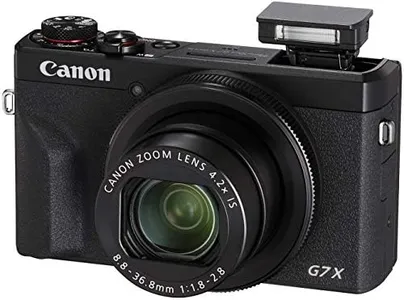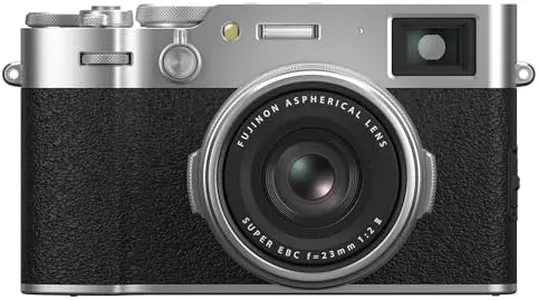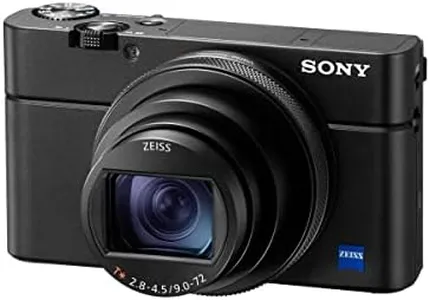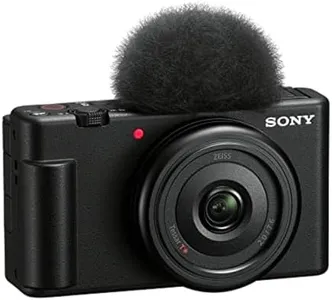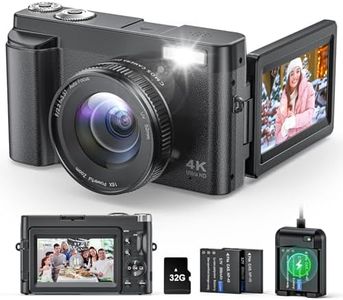10 Best Cameras For Photography 2025 in the United States
Our technology thoroughly searches through the online shopping world, reviewing hundreds of sites. We then process and analyze this information, updating in real-time to bring you the latest top-rated products. This way, you always get the best and most current options available.

Our Top Picks
Winner
Canon EOS Rebel T7 DSLR Camera with 18-55mm Lens | Built-in Wi-Fi | 24.1 MP CMOS Sensor | DIGIC 4+ Image Processor and Full HD Videos
Most important from
7654 reviews
The Canon EOS Rebel T7 DSLR Camera is a solid choice for photography enthusiasts, particularly beginners. Its 24.1 Megapixel CMOS (APS-C) sensor delivers high-resolution images, suitable for detailed prints and cropping. The camera offers an ISO range of 100-6400, expandable to 12800, which helps in various lighting conditions, though low-light performance may be limited compared to higher-end models due to potential noise issues at higher ISO levels. The 9-point autofocus system, including AI Servo AF, is quite basic but functional for general photography. It may struggle with fast-moving subjects, making it less ideal for sports or wildlife photography.
The built-in Wi-Fi and NFC provide easy sharing and remote shooting capabilities, which are convenient features for social media enthusiasts. Lens compatibility is broad, supporting Canon EF and EF-S lenses, giving users access to a wide range of options for different photography styles. The optical viewfinder with 95% coverage and 3-inch LCD screen are standard, offering basic but effective framing and reviewing tools. The build quality is decent with a lightweight design, making it portable without feeling flimsy.
The camera records Full HD videos at 30 fps, sufficient for everyday video needs but lacking 4K support that more advanced users might seek. The battery life of around 500 shots per charge is adequate for regular outings. While it lacks weather sealing and advanced autofocus, it's a compelling entry-level option for those who want quality images without a steep learning curve or high cost.
Most important from
7654 reviews
Canon EOS R50 Mirrorless Camera RF-S18-45mm F4.5-6.3 is STM Lens Kit, 24.2 Megapixel CMOS (APS-C) Sensor, 4K Video, Hybrid Camera, Photo and Video, Vlogging, Content Creator, RF Mount, Black
Most important from
1125 reviews
The Canon EOS R50 Mirrorless Camera is a solid choice for photography enthusiasts and content creators. With a 24.2 Megapixel CMOS (APS-C) sensor, it offers high image quality, capturing stunning detail and clarity. The DIGIC X processor ensures fast processing speeds, making it suitable for capturing fast action shots with up to 12 fps continuous shooting. The camera's Dual Pixel CMOS AF II system covers a wide area with 651 autofocus zones, providing accurate and fast focusing, which is especially useful for tracking moving subjects like people, animals, and vehicles.
The camera performs well in low-light conditions, thanks to its expanded ISO range up to 51200 and advanced auto modes that enhance image quality in challenging lighting scenarios. Videographers will appreciate the 6K oversampled uncropped 4K video recording at up to 30 fps and Full-HD recording at up to 120 fps, which allows for smooth and detailed video capture. The vari-angle touchscreen and 2.36-million-dot electronic viewfinder make composing shots easy from various angles. Connectivity options include built-in Bluetooth and Wi-Fi, enabling easy file transfer and remote control via the Canon Camera Connect app.
There are a few drawbacks to consider. The lens kit included (RF-S18-45mm F4.5-6.3 IS STM) may not offer the best low-light performance due to its maximum aperture range, and the camera lacks in-body image stabilization, which could affect handheld shooting stability. Additionally, while the camera is lightweight and ergonomic, it might feel small for users with larger hands. The Canon EOS R50 is a versatile and capable camera that excels in image quality and autofocus performance, making it suitable for various photography and videography needs, but users should be mindful of lens limitations and the lack of in-body stabilization.
Most important from
1125 reviews
Buying Guide for the Best Cameras For Photography
Choosing the right camera for photography can be a daunting task, but with a little guidance, you can find the perfect fit for your needs. The key is to understand the different specifications and how they align with your photography goals. Whether you're a beginner, hobbyist, or professional, knowing what to look for in a camera will help you make an informed decision. Here are some key specifications to consider when selecting a camera for photography.FAQ
Most Popular Categories Right Now
